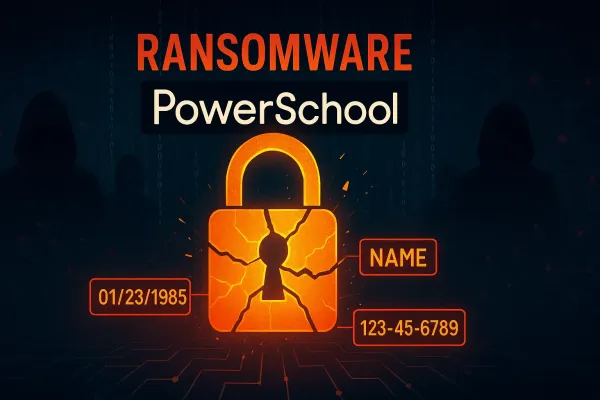
Ransomware Complexities- Lessons from the PowerSchool Incident
The increasing prevalence of ransomware attacks, particularly within sensitive sectors such as education, highlights a troubling trend in the cybersecurity landscape. The recent PowerSchool incident serves as a poignant example of this phenomenon, illustrating how payment of ransoms does not guarantee protection from subsequent attacks. In this post, we will delve into the technical details behind the PowerSchool breach, discuss the implications of double-extortion tactics, and propose effective measures organizations can take to mitigate similar threats.
Overview of the PowerSchool Breach
On December 28, 2024, PowerSchool, a prominent online education software provider, suffered a significant data breach that compromised the sensitive personal information of over 60 million students and 9.5 million educators. Initial reports indicated that attackers gained unauthorized access via a compromised credential from the customer support portal linked to PowerSchool’s Student Information System (SIS). Following the breach, PowerSchool made the controversial decision to pay an undisclosed ransom to prevent data from being published.
Data Compromised
The stolen data encompassed a wide array of personally identifiable information (PII) including:
- Full names
- Contact information
- Dates of birth
- Social Security Numbers (SSNs)
- Social Insurance Numbers (SINs)
- Limited medical alert details
PowerSchool later confirmed that credit card and banking information had not been compromised, but the risk of identity theft remained substantial for affected individuals.
The Fallout: Double-Extortion Tactics
Despite PowerSchool’s efforts to contain the situation by paying the ransom, the aftermath revealed the insidious tactics of double-extortion employed by cybercriminals. Months after the breach, threat actors began directly contacting school districts, threatening them with further publication of sensitive data unless additional ransom payments were made. This escalation emphasizes a critical lesson: paying a ransom does not conclude a cyber incident but potentially opens the door for prolonged exploitation.
The Role of Threat Actors
Security analysts have attributed the second-wave extortion to organized groups predominantly operating on dark web marketplaces, such as ShinyHunters. This group, specializing in massive data breaches targeting educational and financial sectors, has made headlines for leveraging stolen data to extract further payments from victims.
A recent article from CyberScoop notes that the trend of double extortion is particularly pronounced in sectors where large volumes of sensitive data can be leveraged for maximum pressure. The strategy of holding data hostage while simultaneously fishing for ransom payments embodies a shift from traditional ransomware models focused singularly on file encryption.
Industry Insights and Analyst Perspectives
The Ethical Dilemma of Ransom Payments
Industry experts, including Dave Meister from Check Point Software, argue that organizations often fall into a cycle of wishful thinking when they pay ransoms, erroneously assuming their data has been securely deleted. Willy Leichter from PointGuardAI pointed out the paradox; while paying seems like a necessary evil, it inadvertently fosters a cycle of crime.
Recent studies, such as a 2024 Cybereason report, reveal that approximately 78% of organizations that pay a ransom are hit by subsequent attacks, often from the same threat actors. This finding is corroborated by Dr. Darren Williams, CEO of BlackFog, who emphasized that organizations need to shift focus from merely responding to incidents to implementing prevention strategies that block data exfiltration at the source.
Proactive Measures to Combat Ransomware
Cybersecurity frameworks such as the NIST Cybersecurity Framework recommend a multifaceted approach to security that includes:
- Data Loss Prevention (DLP): Implementing DLP technologies to monitor and control data flows within and outside the organization.
- Zero Trust Architectures: Adopting a Zero Trust framework that imposes stringent verification for every user, device, and network attempting to access resources.
- Incident Response Plans: Developing and regularly updating incident response plans to ensure rapid identification, containment, and recovery from breaches.
Implementing continuous training and development for security teams to address evolving threats is also paramount. Utilizing threat intelligence feeds can provide organizations with real-time awareness of emerging vulnerabilities and known threats targeting similar sectors.
Conclusion
The PowerSchool incident serves as a stark reminder of the complexities and evolving strategies employed by cybercriminals in the age of ransomware. Organizations must recognize that paying a ransom does not signify the end of the attack lifecycle and instead may invite further extortion. By prioritizing preventive measures, fostering a culture of security awareness, and utilizing advanced security frameworks, organizations can better safeguard against the multifaceted threats posed by ransomware. As we move forward, it is imperative that the cybersecurity community collaborates to create resilient systems capable of withstanding and mitigating the impact of such attacks.